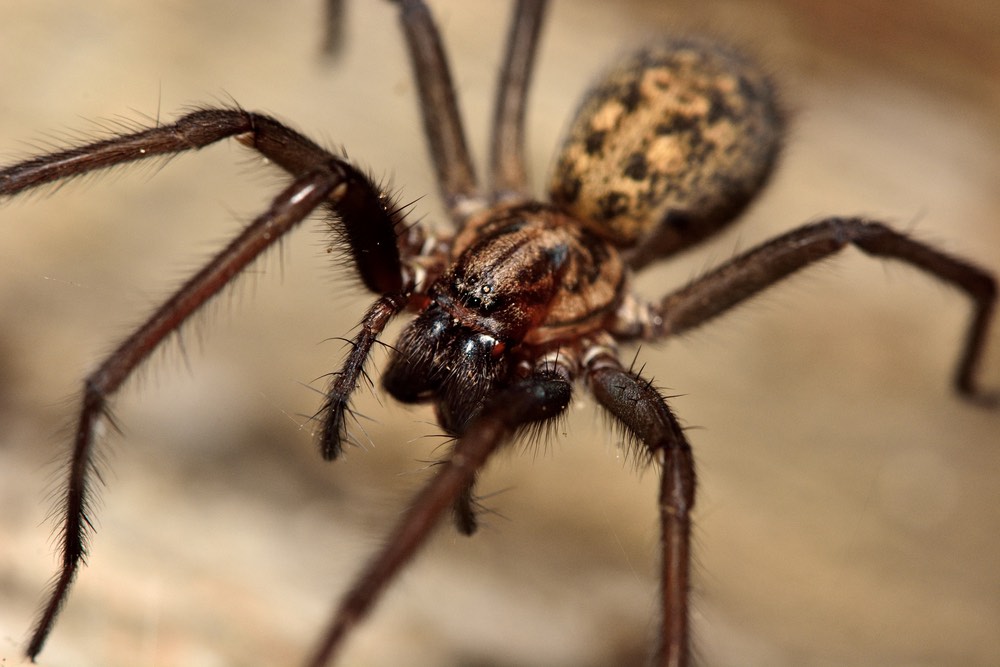Lifestyles of the Rich Attract a Wealth of Insects

Think money protects against insect infestation? Think again. New research finds that the homes in the wealthiest neighborhoods have more diverse creepy-crawlies living indoors than homes in poorer ZIP codes.
The finding is a somewhat surprising example of the "luxury effect," in which researchers have found that wealth correlates with more diverse animals, such as birds and bats, living outdoors. It's not entirely clear why affluence also equals diverse arthropods (the group including insects, spiders, millipedes and centipedes), but landscaping in wealthy neighborhoods seems to play a large role, said study researcher Misha Leong, a postdoctoral researcher in entomology at the California Academy of Sciences.
"These decisions that are being made collectively by all the neighbors really work together to influence what is going on in your house," Leong told Live Science. "It’s not just your property." [Photos: 15 Insects and Spiders That May Share Your Home]
Rich bugs, poor bugs
Leong and her colleagues used data from an exhaustive biological survey of 50 homes in and around Raleigh, North Carolina, to quantify indoor arthropods.
"It's through exhaustive hand-collecting, which means we don kneepads and headlamps," Leong said. Windowsills, the edges of floorboards, spider webs in corners, oil droplets on kitchen backsplashes: All are rich veins for finding insects, spiders and other arthropods, both living and dead.
A study published in the journal PeerJ in January documented the researchers' basic results, including the fact that the average house is home to some 100 species of arthropod.
"There's this growing realization that there's this biodiversity right under our noses that we've ignored for a long time," Leong said.
Get the world’s most fascinating discoveries delivered straight to your inbox.
Among the denizens of Raleigh-area homes were well-known arthropods like cobweb spiders, cockroaches and silverfish. There were also some surprises, Leong said, like a species of ant found in a second-floor hallway that's rare to stumble across even outside. Ninety-eight percent of homes boasted populations of book lice (they eat fungi and mold, not blood) and 100 percent hosted spindly legged flies called gall midges (Cecidomyiidae).
The new research digs in deeper to find out why some homes are more diverse than others. Leong and her colleagues combined the insect census data with information from the U.S. census, from satellite imagery of vegetation and from property records.
The wealthier the neighborhood, the greater its indoor diversity, the researchers reported today (Aug. 2) in the journal Biology Letters. This correlation was related to the amount of ground cover in a neighborhood. In areas where there was a lot of ground cover, neighborhood wealth didn't really affect arthropod diversity. But when the nearby ground cover was medium or sparse, income made a big difference.
Landscaping arthropod habitat
Vegetation affects indoor arthropods because many indoor species are really outdoor organisms that accidentally wandered inside, Leong said. In a sparsely vegetated yard, there isn't much habitat for insects, spiders and other creatures. Lower-income neighborhoods that string together many sparse yards thus don't have a lot of biodiversity. [See Dazzling Photos of Dew-Covered Insects]
In wealthier neighborhoods, though, more of the homes are landscaped, so one dirt-caked outlier of a yard doesn't deter the local creepy-crawlies as much.
"Houses that don't have much local vegetation in their property can really be rescued — I don't know if rescued is the right word because not everyone wants more arthropods in their houses — but they experience the benefits of higher diversity just through their neighborhood context," Leong said.
The researchers are now working to expand their indoor diversity surveys around the world, she said. They've already sampled homes in the Bay Area in California, in cities and in rural areas in Peru, and in Sweden. They're also using the North Carolina data to make fine-grained maps of insect diversity within houses, hoping to answer burning questions like what species live in bathrooms versus kitchens versus common areas.
Previously, much of the research on urban entomology focused on pest species, Leong said, but most of the arthropods that live alongside people are benign. There may even be benefits to having a bustling population of arthropods hunting and snaring one another in dusty corners and under rugs.
"It would be super-interesting to try to understand whether or not having a more diverse community composition of arthropods helps keep down pests populations," Leong said.
Original article on Live Science.

Stephanie Pappas is a contributing writer for Live Science, covering topics ranging from geoscience to archaeology to the human brain and behavior. She was previously a senior writer for Live Science but is now a freelancer based in Denver, Colorado, and regularly contributes to Scientific American and The Monitor, the monthly magazine of the American Psychological Association. Stephanie received a bachelor's degree in psychology from the University of South Carolina and a graduate certificate in science communication from the University of California, Santa Cruz.


